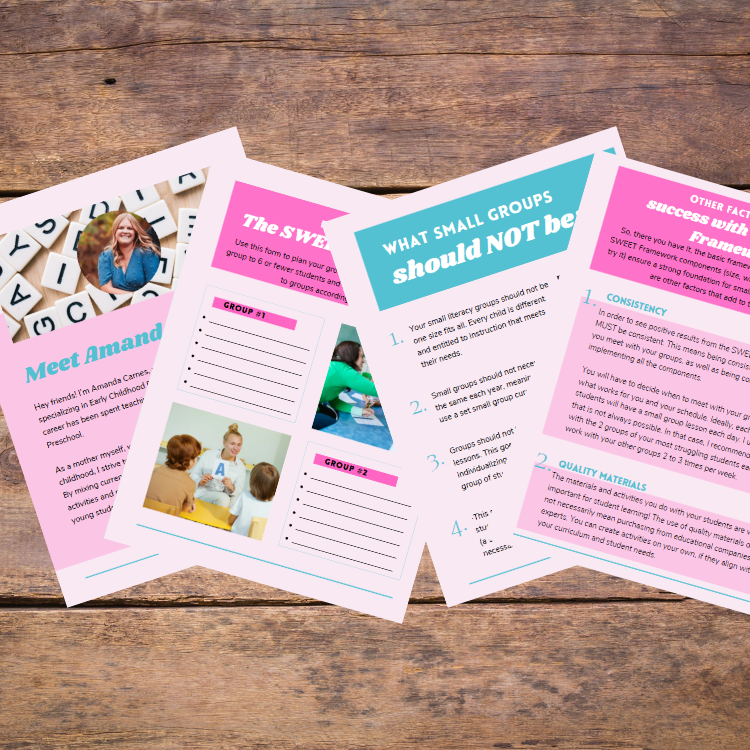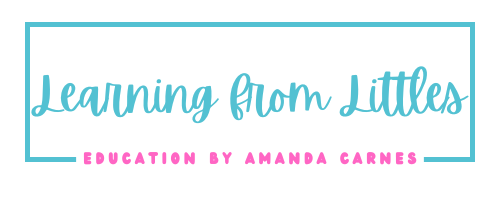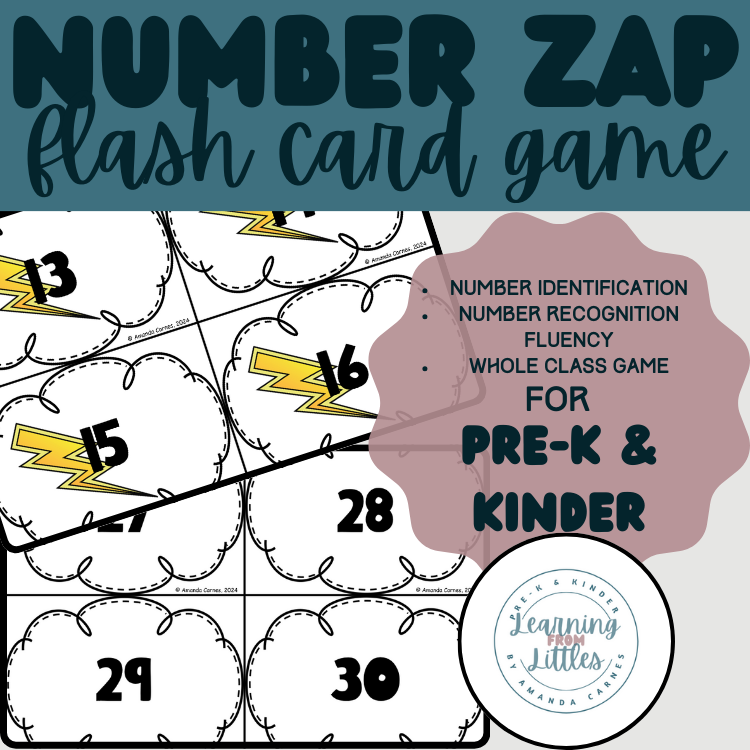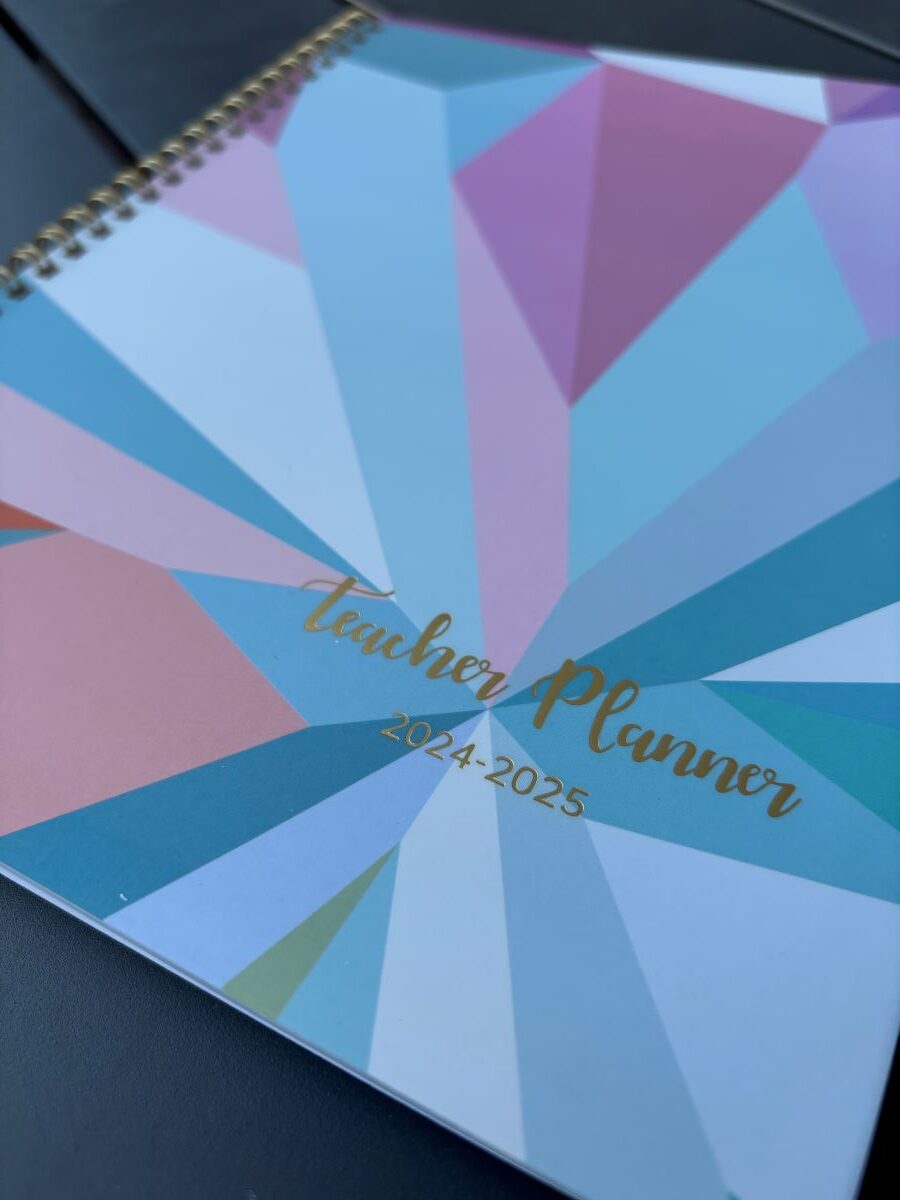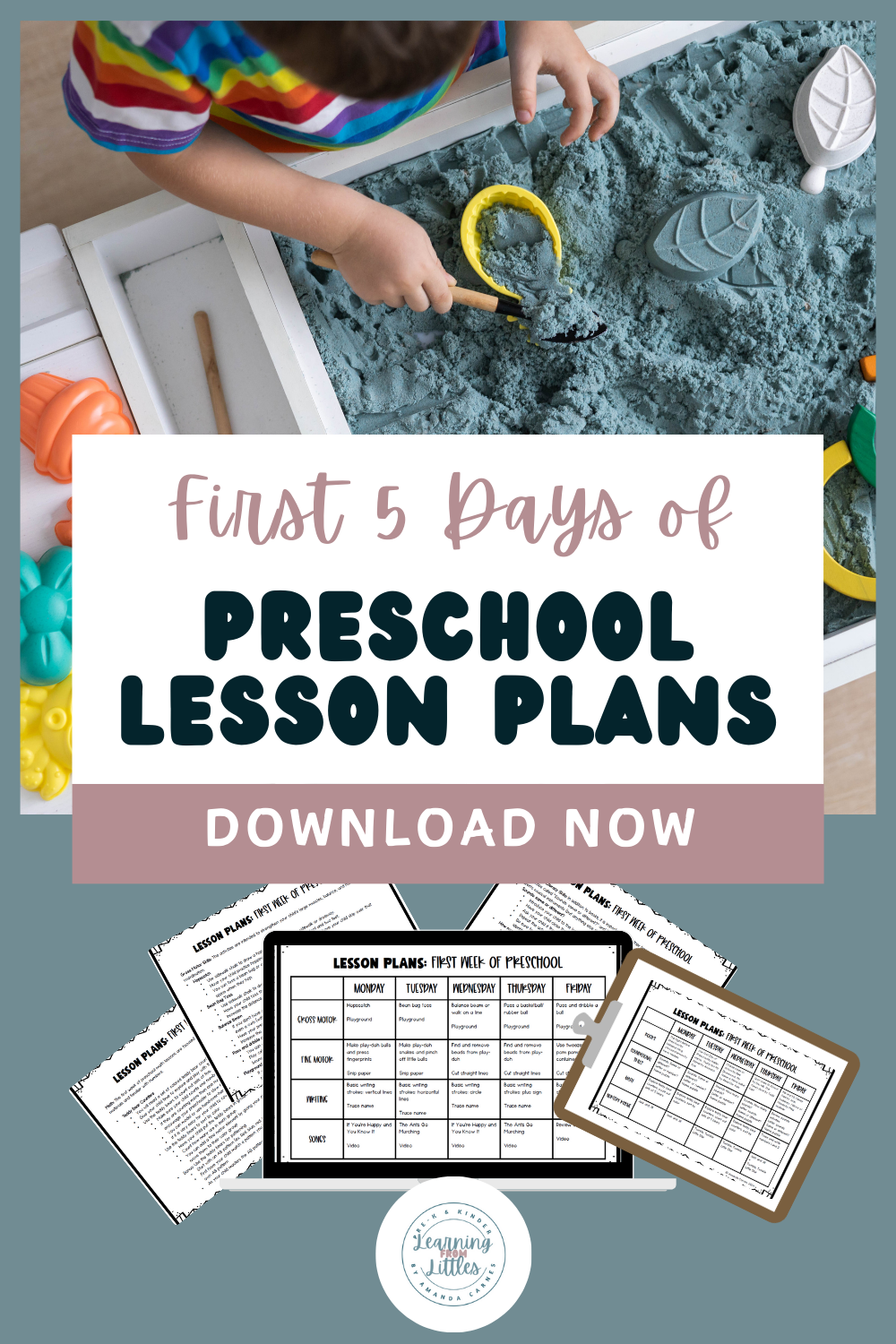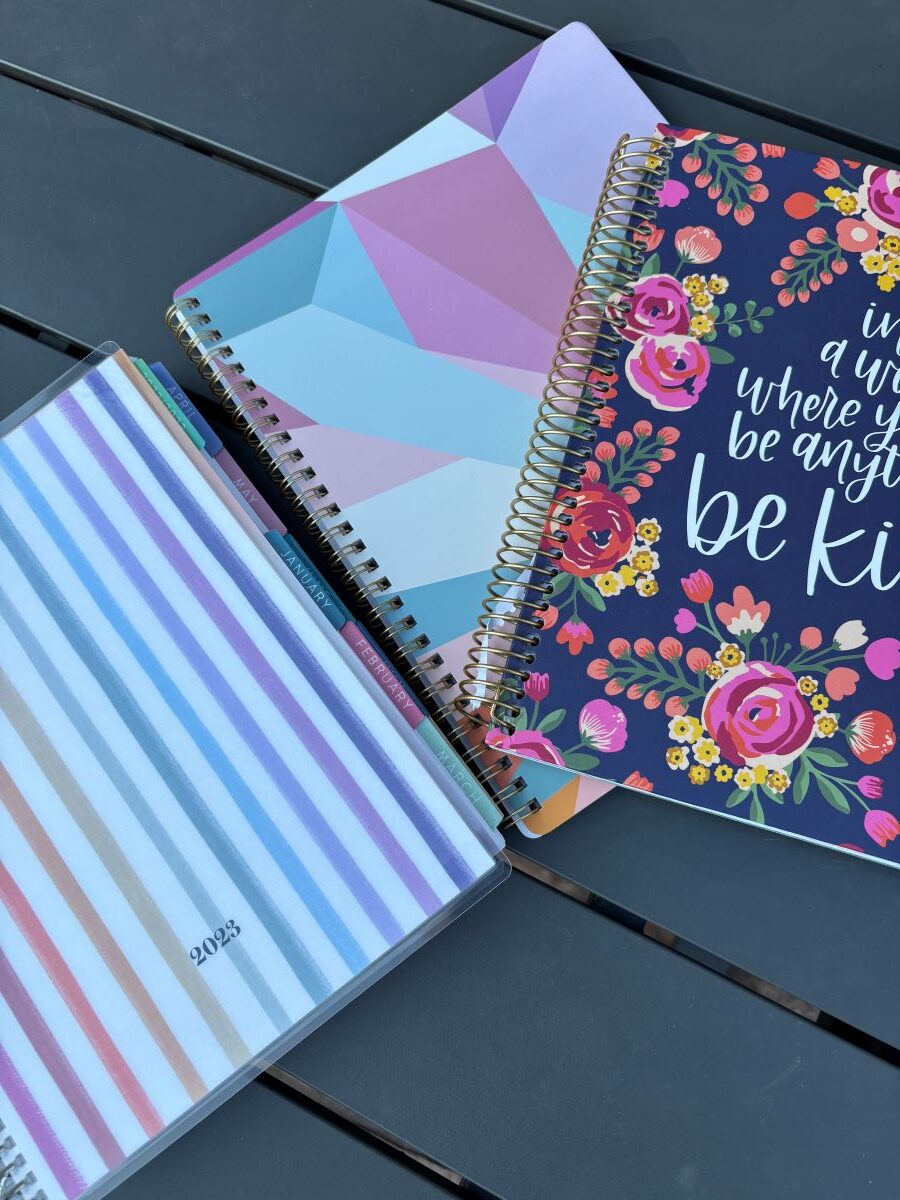How I Structure Small Group Instruction to Skyrocket K-2 Literacy Skills
Do you want to see massive literacy growth and improvement in phonics and reading skills by implementing small group instruction?
Look no further! I have a guide designed especially for you as a kindergarten through 2nd grade teacher: The SWEET Framework.
In this post:
- Why I developed The SWEET Framework
- Why it works
- How you can see huge results
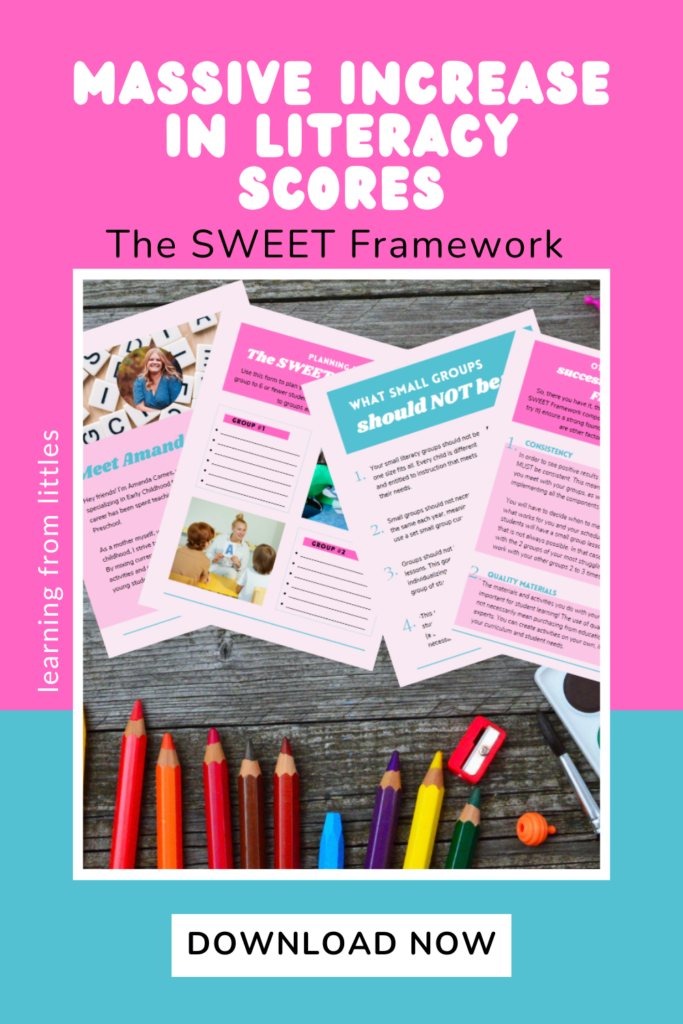
Why I Said “NO THANKS” to a One-Size-Fits-All Approach to Literacy Instruction
When my district rolled out a new literacy curriculum, I tried to follow the plan. But there was one big issue—we were expected to stick to whole group lessons- no time for small group instruction.
Everything was scripted, whole-group, and designed to move all students along at the same pace.
At first, I trusted the process. But as the months went by, I saw my students struggling more than ever.
The one-size-fits-all approach wasn’t working, because my struggling readers were falling further behind, and even my strongest students weren’t making the progress I expected of them.
I knew something had to change. So, I went back to implementing small groups—but this time, I built a system that was more structured, intentional, and effective than ever before!
As I designed my framework for small group instruction, I kept one key question in mind: What does research say about how kids learn to read?
For this reason, I leaned into the Science of Reading and made sure my system focused on the core skills early childhood students need for reading proficiency and fluency—phonemic awareness and phonics.
A Targeted, Research-Based Approach to Small Group Instruction That Changed Everything
Instead of feeling rushed and scattered, my small groups became focused with a high impact. I created a simple yet powerful framework that:
✔ Maximizes every minute of small group time
✔ Targets essential phonics skills in a meaningful way
✔ Keeps students engaged with hands-on learning
✔ Gives students the confidence to apply their learning independently
The results? A complete transformation! My students started making huge gains in reading proficiency, and for the first time, small groups felt manageable instead of overwhelming.
Want to see exactly how I structure my small groups for success? Grab my free guide, where I break down the framework I use in my kindergarten classroom every single day!
👉 [Download The SWEET Framework Guide Here!]

Okay, But Why Does This Approach to Small Group Instruction Actually Work?
I get it—there are a ton of small group strategies out there. So what makes this one different? Why does The SWEET Framework actually work when so many approaches leave teachers feeling frustrated and overwhelmed?
Simply put—it’s structured, research-based, and realistic.
Here’s why it makes such a big difference in student success:
✅ It’s rooted in the Science of Reading – Instead of guessing which skills to focus on, this framework zeroes in on foundational literacy skills that enhance your whole group instruction on phonemic awareness, phonic, and fluency.
Every activity has a purpose, meaning no more wasted time on ineffective strategies.
✅ It makes the most of every minute – Let’s be real: small group time is short, and every second counts.
This approach keeps things fast-paced and intentional, ensuring that students get exactly what they need without fluff or filler.
✅ It’s engaging and hands-on – Kids learn best when they’re doing, not just listening. This framework ensures that students are fully engaged—and actually retain what they’re learning.
Here’s one of the activities I use to make our small group learning time fun and meaningful: Mystery CVC Words.
✅ Students must take on the cognitive load – During whole group instruction, it’s WAY too easy for students to tune out the lesson and let other kids do the work.
This system ensures that all students take part in the learning process.
✅ It follows a predictable routine (without being boring!) – Predictability helps students feel confident and focused, but the teacher makes the activities varied enough to keep things fresh.
That means no more “What are we doing today?” moments—just efficient, meaningful small group instruction.
✅ It bridges the gap between small group and independent practice – Ever notice how some students do great during small groups but struggle on their own?
Rather, The SWEET Framework ensures that students immediately apply what they’ve learned through writing or another form of independent practice (right there at the small group table), reinforcing skills so they stick.
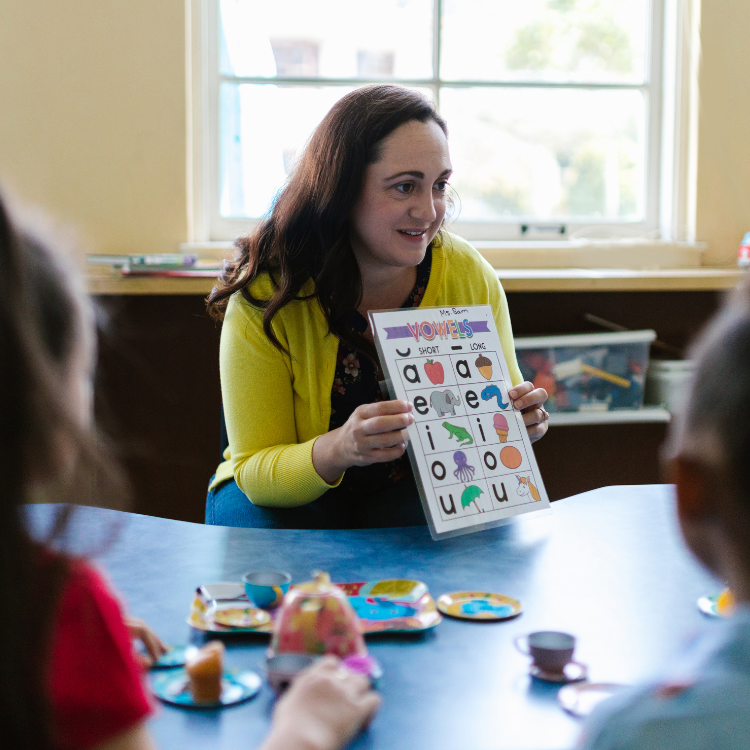
The SWEET Framework is an awesome addition to your instructional routine!
And the best part? It’s simple and manageable for teachers. You don’t need elaborate materials or hours of prep.
Given that, once you have the system in place, it practically runs itself—giving you more time to actually teach instead of scrambling to plan.
Now do you see why you need to start implementing The SWEET Framework in your classroom. Grab my free guide for all the details!
To maximize every second of your small group warm-up, get my Kindergarten Literacy Routines that are quick and effective.
👉 [Download The SWEET Framework Guide Here!]
Ready to See Huge Literacy Gains Because of Small Group Instruction? Let’s Do This!
Definitely, if there’s one thing I’ve learned, it’s that small group instruction should feel productive, not overwhelming.
Therefore, The SWEET Framework gives you a clear structure that makes small groups work—for both you and your students.
When I started using this system in my kindergarten classroom, the results were undeniable:
✔ My struggling readers started catching up—fast!
✔ The on-level students gained confidence and fluency.
✔ Those highest readers were consistently challenged and engaged.
✔ I finally felt in control of my small groups instead of scrambling through them.
The results were staggering! The only thing I changed was adding my approach to small groups for literacy instruction.
And the best part? It didn’t take months to see progress. With the right structure in place, I saw major improvements in just a few weeks.
On our first universal literacy screener this year, 40% of my students were NOT proficient in the phonemic awareness, phonics, and print concepts skills assessed.
After only 9 weeks of implementing The SWEET Framework, only 5% of my students were not performing at the grade level expectation.
That means 95% of my students ARE proficient in literacy skills!!
This is all thanks to my incredibly simple approach to small group instruction: The SWEET Framework.
So, if you’re feeling frustrated with small group time—or if you just know your students could be making more progress—I promise this framework will change everything.
👉 [One last time: Download the SWEET Framework Guide for FREE Here!]
